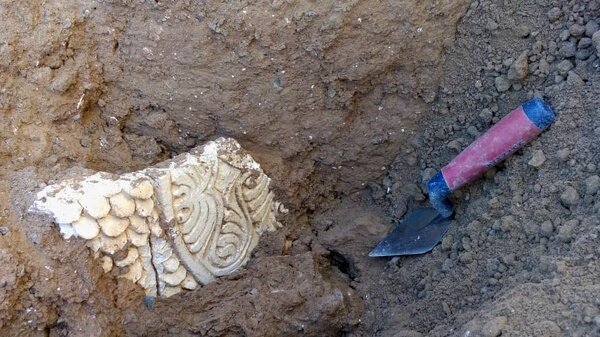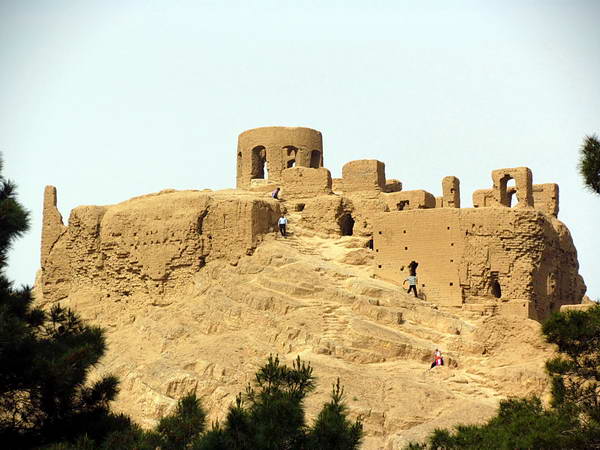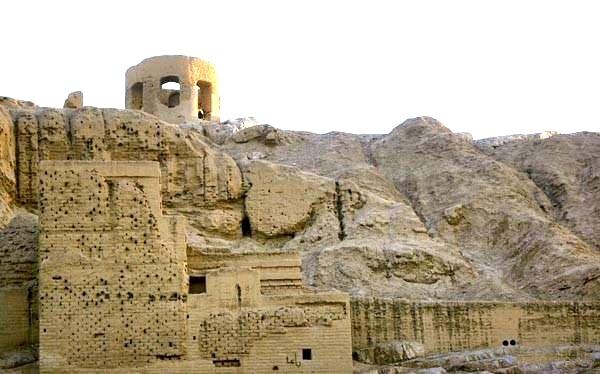Welcome to DU!
The truly grassroots left-of-center political community where regular people, not algorithms, drive the discussions and set the standards.
Join the community:
Create a free account
Support DU (and get rid of ads!):
Become a Star Member
Latest Breaking News
Editorials & Other Articles
General Discussion
The DU Lounge
All Forums
Issue Forums
Culture Forums
Alliance Forums
Region Forums
Support Forums
Help & Search
Anthropology
Related: About this forumArchaeologists Unearthed Third Greatest Fire Temple Existing in Ancient Iran's Sassanid Era

Archaeologists have unearthed ruins of what they believe to be the third-greatest fire temple in ancient Iran during the Sassanid era. The Sassanid era (224-651 CE) was the longest-lived Persian royal dynasty, ruling for as long as 400 years.
The fifth season of excavation of an ongoing archaeological survey in a valley near the village of Robat-e Sefid/Bazeh Hur in northeastern Iran continues under the headed of archaeologist Meysam Labbaf-Khaniki.
“We have probably discovered the third greatest fire temple that existed in ancient Iran,” archaeologist Meysam Labbaf-Khaniki said on Wednesday, according to ILNA.
. . .
However, the outside façade of a Zoroastrian fire temple is nearly usually purposefully unassuming and devoid of ornamentation. This may reflect historic tradition (supported by the prosaic nature of fire temple technical terms ) that the primary aim of a fire temple is to house a holy fire, rather than to glorify what is otherwise just a structure.
The basic structure of present-day fire temples is always the same. There are no indigenous sources older than the 19th century that describe an Iranian fire temple (the 9th-century theologian Manushchir observed that they had a standard floor plan, but what this might have been is unknown), and it is possible that the temples there today have features that are original of Indian origin.
More:
https://arkeonews.net/archaeologists-unearthed-third-greatest-fire-temple-existing-in-ancient-irans-sassanid-era/
~ ~ ~

Fire Temple of Yazd
From Wikipedia, the free encyclopedia
The Fire Temple of Yazd (آتشکده یزد, Ātaškade-ye Yazd), also known as Yazd Atash Behram (Persian: آتش بهرام یزد, Ātaš Bahrām-e Yazd), is a Zoroastrian fire temple in Yazd, Yazd province, Iran. It enshrines the Atash Bahram, meaning “Victorious Fire”, dated to 470 AD. It is one of the nine Atash Bahrams, the only one of the highest grade fire in ancient Iran where Zoroastrians have practiced their religion since 400 BC; the other eight Atash Bahrams are in India.[1][2] According to Aga Rustam Noshiravan Belivani, of Sharifabad, the Anjuman-i Nasiri (elected Zoroastrian officials) opened the Yazd Atash Behram in the 1960s to non-Zoroastrian visitors.
Wikimedia | © OpenStreetMap
Veneration of fire has its roots in the older practice of keeping a hearth fire going especially in the cold winters on the steppes of Central Asia when the Indo Europeans led a nomadic life, and fire was a source of warmth, light and comfort. The Iranians began calling fire the Atas Yazata (divinity) and began giving it offerings in return for its constant help. The ceremony accompanying recitation of the Yasna Haptanghaiti seems to originate in pre Zoroastrian times where priests offered libations to fire and water. [3]
ons/thumb/5/5f/Zoroastrian_Fire_Temple_in_Yazd.JPG/300px-Zoroastrian_Fire_Temple_in_Yazd.JPG
More:
https://en.wikipedia.org/wiki/Fire_Temple_of_Yazd
~ ~ ~
The Fire Temple of Isfahan (Persian: آتشگاه اصفهان Âtašgâh-e Esfahân, also Romanized as Ātashgāh-e Esfahān) is a Sassanid-era archaeological complex located on a hill of the same name about eight kilometers west of city center of Isfahan, Iran.[1][2]
The hill, which rises about 210 meters above the surrounding plain, was previously called Maras or Marabin after a village near there, and it is by that name that the site is referred to by Arab historians.

. . .
Description
One part of the complex, on the southern flank of the hill, are the remains of a citadel of about twenty buildings (or rooms within buildings), many of which—particularly those in the lower half of cluster—are however only evident as foundation traces. Several buildings in the cluster have a classic chartaq "four arch" floor-plan, characteristic of Zoroastrian fire-temples of the 3rd century onwards and that are the actual atashgahs that housed sacred fires. Other buildings include what may have been storage rooms and living quarters for priests and affluent pilgrims. A tentative identification of the purpose of the ruins was first made in 1937 by Andre Godard,[3][4] but it was not until 1960, when architect Maxine Siroux made the first drawings, that the site could be properly studied. Godard's identifications were subsequently confirmed by Klaus Schippman in 1971.[5]
Another feature of the complex are the remains of a tower-like circular building on the very top of the same hill. This structure, which was once at least twenty meters high, is known by the local populace as the Burj-i Gurban, or Burj-i Kurban,[6] "Tower of Sacrifice," and appears to have been a military watch-tower with a flare that could be lit to warn of an approaching enemy (i.e. a beacon).[5]

More:
https://en.wikipedia.org/wiki/Fire_Temple_of_Isfahan


Fire Temple of Isfahan
1 replies
 = new reply since forum marked as read
Highlight:
NoneDon't highlight anything
5 newestHighlight 5 most recent replies
= new reply since forum marked as read
Highlight:
NoneDon't highlight anything
5 newestHighlight 5 most recent replies
Archaeologists Unearthed Third Greatest Fire Temple Existing in Ancient Iran's Sassanid Era (Original Post)
Judi Lynn
Jul 2022
OP
Easterncedar
(4,760 posts)1. Interesting post as always
Thanks, Judi Lynn. You do the research and I reap the benefit. I appreciate your generosity!